Terry Fox and his heroic marathon from ocean to ocean
Categories: Health and Medicine | Sport
By Pictolic https://pictolic.com/article/terry-fox-and-his-heroic-marathon-from-ocean-to-ocean.htmlIt often happens that people who did not plan a feat become heroes. They simply did what they thought was necessary and went towards their goal. Canadian Terrence Stanley Fox is just such an involuntary hero. He gave hope to millions of people with dangerous illnesses and gave birth to an entire movement that helps cancer patients.
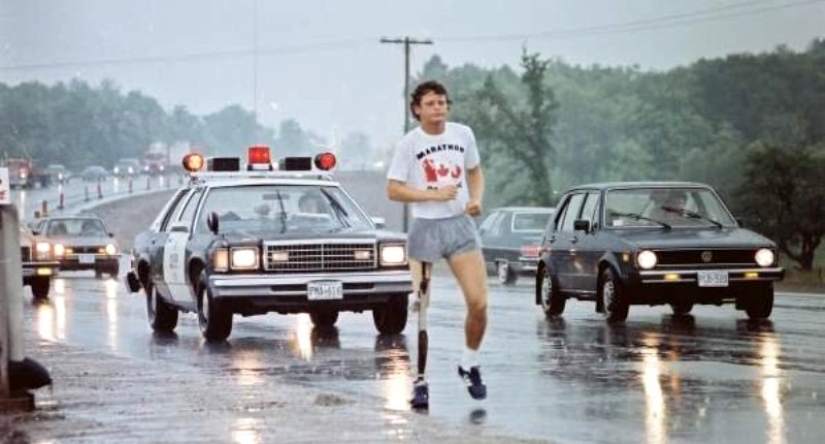
Terry Fox was born in Winnipeg, Canada on July 28, 1958. He grew up as an ordinary boy - he studied at school, was fond of football, baseball and rugby. In high school, Terry dreamed of becoming a basketball player, but he was not suitable due to his short height. His coach said that this sport was not for him and advised him to take up athletics. The guy started running and he liked it.
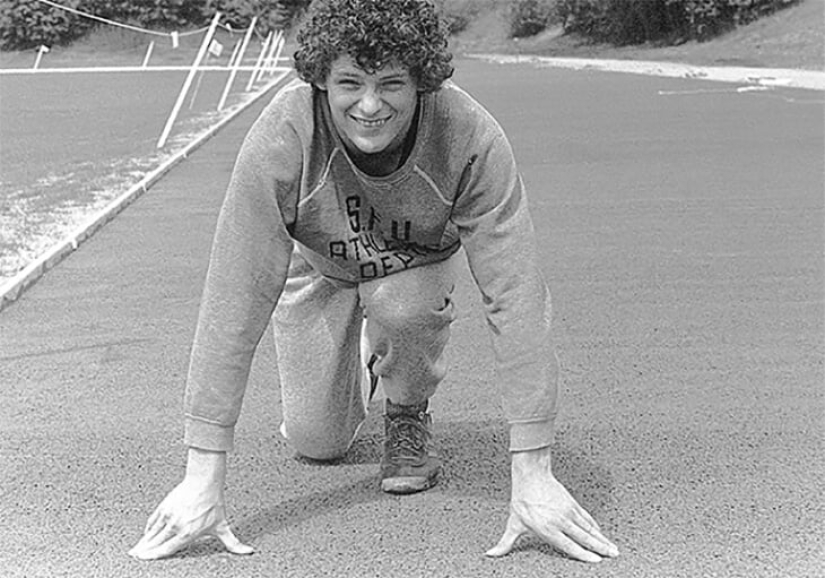
Terry was so fascinated by sports that he decided to go to university and become a physical education teacher. But the dream was not destined to come true. In 1977, he felt severe pain in his right leg and consulted a doctor. After examination, Fox was given a terrible diagnosis - sarcoma.
The deadly disease affected the knee joint and, in order to save the guy’s life, his leg had to be amputated to the middle of the thigh. After this, Terry had to undergo chemotherapy. Doctors told the patient that he had a 50 percent chance of survival. But he decided that this was not bad at all, because just a few years earlier, cures occurred in only 15 percent of cases.
Terry Fox did not lose heart. Just three weeks after the amputation, he began to master walking on a prosthesis. Treatment continued even after discharge from the hospital - in total, the Canadian had to endure 16 months of chemotherapy. Fox spent a lot of time at the cancer center, where he saw people suffer and die.
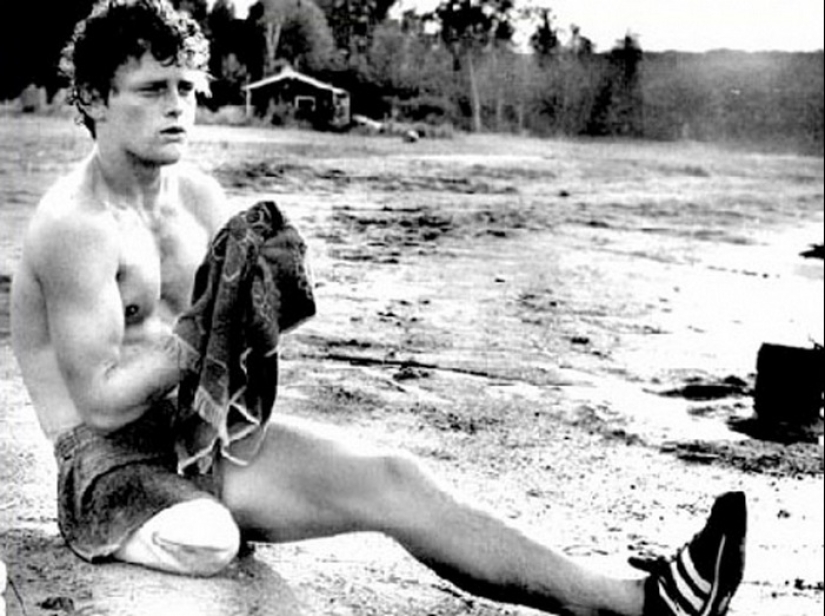
He also noted that the effectiveness of the fight against cancer is low due to lack of funding. It occurred to Terry that if every Canadian, then 24 million, gave just $1, it would significantly improve the situation. But to convince people to donate, you had to get their attention. Then Terry Fox decided to run a marathon.
Terry shared his idea with the leaders of one cancer society. But they didn’t take him seriously and simply brushed aside the project. Fox managed to find sponsors on his own, after which they agreed to cooperate with him. First of all, the guy had to undergo a serious medical examination.
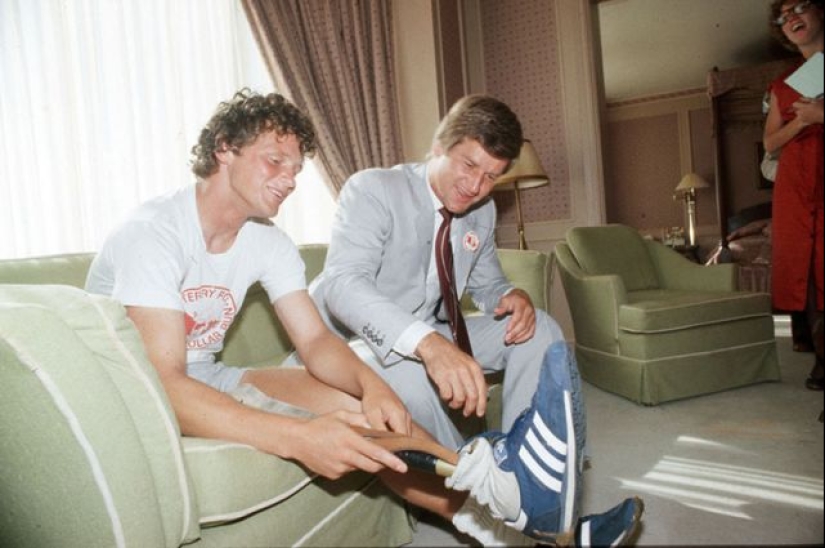
The medical commission concluded that he could expose himself to stress. The only concern was the heart, undermined by chemotherapy. But Terry promised that if he felt something was wrong, he would immediately stop his run. Having received medical approval, the athlete began to develop a plan for the marathon.
Terry Fox set himself a very serious task, which not every healthy athlete could cope with. He decided to cross the whole of Canada from east to west, from the Atlantic to the Pacific Ocean. The guy started his journey in St. John's. In April 1980, Terry dipped the prosthesis into the waters of the Atlantic and filled two plastic bottles. He planned to pour water from one into the Pacific Ocean, and keep the second as a souvenir.
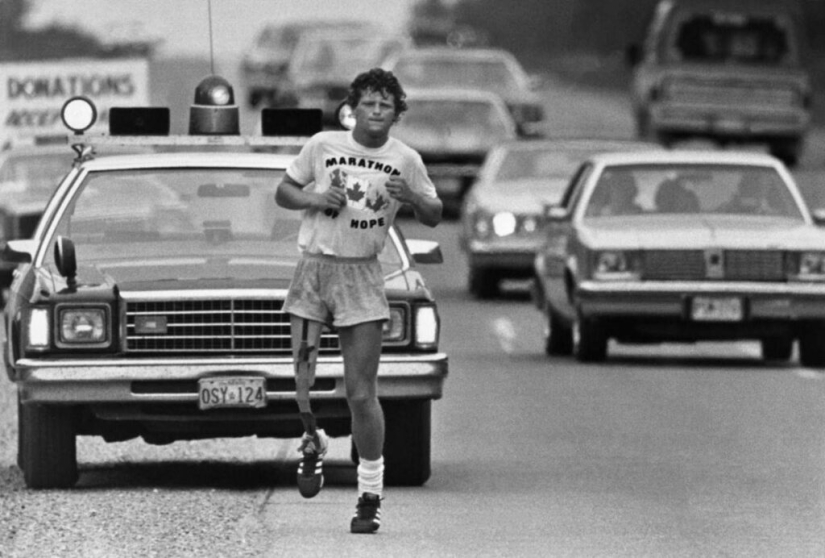
The start was not easy - the weather was rainy and windy. There was no advertising campaign, so there were very few donations. The only thing that spoke about the purpose of the race was the inscription on the athlete’s T-shirt: “Marathon of Hope.” But Terry did not give up, and soon his persistence was rewarded. In the city of Port-aux-Basques with a population of 10 thousand people, he collected 10 thousand dollars. This inspired the athlete.
Terry ran 42 km every day. He constantly faced problems. Drivers on the highway demanded that he get out of the way. The language barrier also greatly hindered him - in the French-speaking provinces it was difficult for him to communicate with the local population who did not know English.
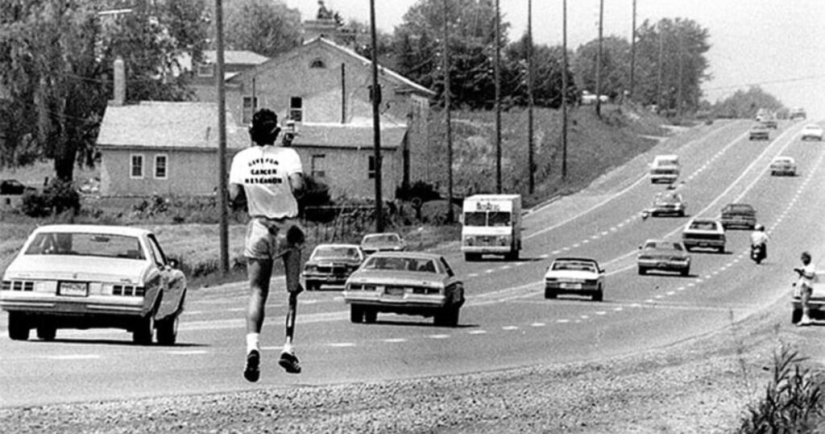
However, upon reaching Montreal, Terry estimated that he had collected $200,000. In the city, he met entrepreneur Isidore Sharp, owner of a hotel chain. A man recently lost his son to melanoma. Sharp said he would pay Terry $2 for every mile he traveled. In addition, the businessman convinced another 1,000 companies to make similar contributions.
Gradually, Terry Fox's fame grew. If at the beginning of his journey no one noticed him, then in Ontario he was already greeted with a brass band. In Ottawa, the capital of Canada, the Governor General and the Prime Minister came to meet him. The amount of donations grew, and this made the marathon runner happy. But it wasn't all that simple. The longer Fox ran, the more health problems arose.
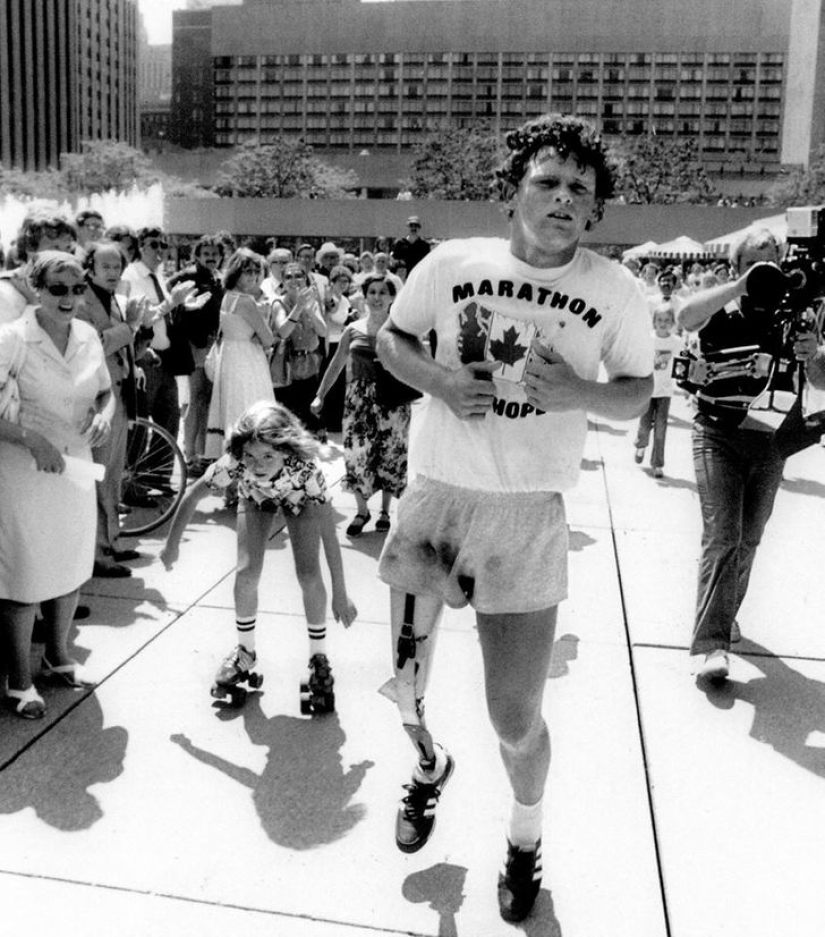
The prosthesis rubbed the stump until it bled, and inflammation began. Terry also had trouble breathing. On September 1, 1980, he became so ill that he needed hospitalization. The runner was examined, and this time the doctors' conclusion was disappointing. At a press conference, Terry Fox said that his cancer had caused complications in his lungs and he was forced to interrupt the marathon.
At this point, Terry had run 5,373 kilometers in 143 days. Along the way, $1.7 million in donations was collected. Fox's feat was reported in the media, and soon the amount reached $24 million, as the athlete had planned. Unfortunately, the hero was unable to defeat the disease. Despite active treatment, his illness progressed and Terry Fox died on June 28, 1981.
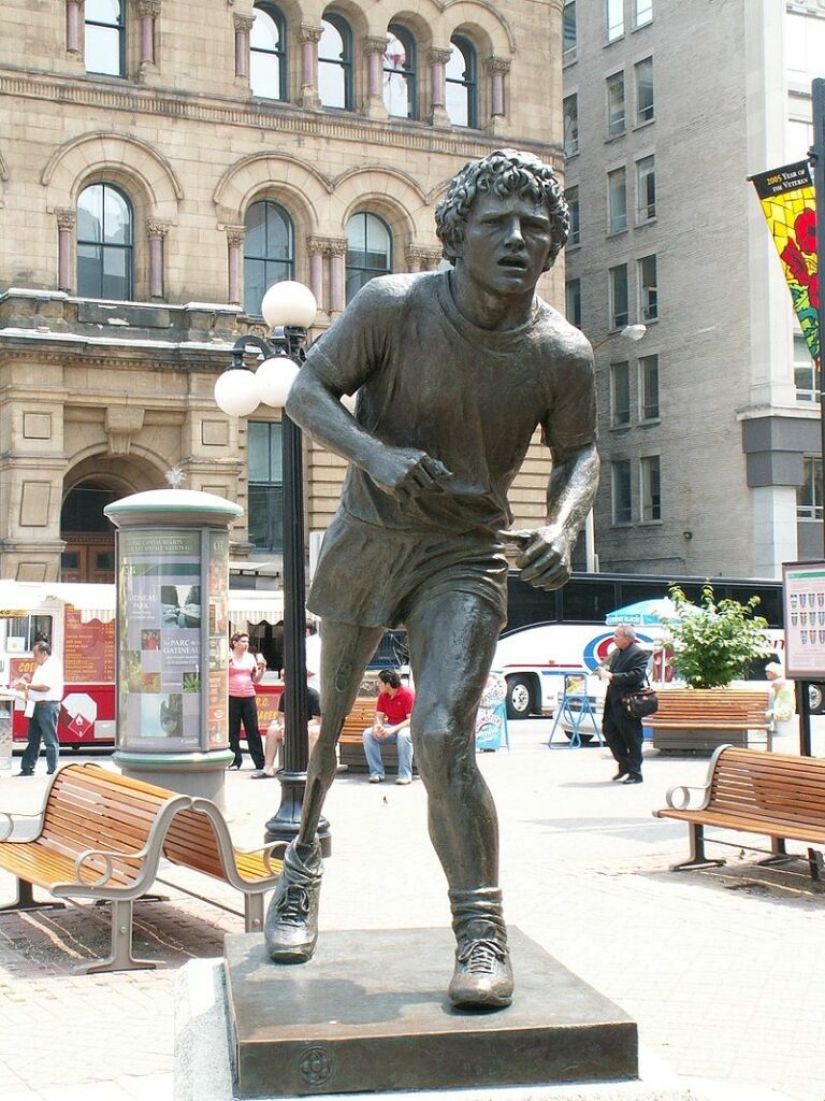
Races named after Terry Fox are still held and not only in Canada. In different countries, people annually run from 5 to 15 km, raising money to fight cancer. Traditionally, events are held without advertising support and only the inscriptions on the athletes’ clothing indicate the goals of the races. The founder of the movement is considered to be Isidore Sharp, who in 1980 helped Terry in his good deed. The businessman is now 92 years old and lives in Toronto. Every year, Sharp donates large sums to cancer clinics and foundations.
Terry Fox is not the only hero helping people. Spaniard Juan Dual, who had almost all his digestive organs removed, participates in marathons and motivates others by his example.
Recent articles

Girls from our collection could easily compete for the title of "Miss universe". And this despite the fact that they are all ...

Young Milla Jovovich in the arms of Michael Jackson - this shot from almost thirty years ago, published on the actress’s ...

From explosions at the slightest collision to endless drifts without a scratch, cinema has long since devised its own laws of ...